20C.70.50 Willows/Rose Hill Neighborhood Regulations.
20C.70.50-010 Introduction.
(1) Purpose. The Willows/Rose Hill Neighborhood vision and policies are included in the Neighborhood Chapter of the Comprehensive Plan. Regulations in Chapter 20C.70 RCDG, Neighborhoods and Design Districts, and regulations in other RCDG chapters are established to implement the neighborhood vision and policies. These regulations are designed to accommodate growth in the Willows/Rose Hill Neighborhood consistent with Redmond’s Comprehensive Plan policies while maintaining the natural character of the neighborhood, including steep slopes, forested areas, and concentrations of open space, and maintaining the character of residential and business areas.
(2) Types of Neighborhood Regulations. RCDG 20C.70.50, Willows/Rose Hill Neighborhood Regulations, contain two types of neighborhood-specific regulations:
(a) Supplemental neighborhood regulations apply in addition to and are used in conjunction with other regulations. For example, Willows Business Park zone regulations apply in addition to regulations specific to the zone and City regulations.
(b) Superseding neighborhood regulations take the place of other regulations. For example, neighborhood multiplex regulations supersede Citywide regulations for multiplex housing. Where there is a conflict between Citywide regulations and neighborhood regulations, the neighborhood regulations apply within the particular neighborhood.
(3) Other Applicable Regulations. As an aid for users of this guide, the sections below include references to other RCDG divisions that contain both Citywide and neighborhood specific regulations, such as RCDG 20C.30.52, Cottage Housing Developments. Users of this guide also need to refer to RCDG divisions containing only zone or Citywide regulations that also apply to the Willows/Rose Hill Neighborhood. (Ord. 2126; Ord. 1901)
20C.70.50-020 Residential Development: General Provisions.
(1) Purpose. Residential regulations are established to implement the Willows/Rose Hill Neighborhood vision and policies and are designed to:
(a) Ensure that infill development blends with existing residential areas and that the character of existing neighborhoods is maintained as the area continues to grow.
(b) Promote variety in the size, type, and price of new dwelling units to enable households of different ages, sizes, and incomes to live in the neighborhood and to help the neighborhood maintain its existing diversity.
(c) Encourage cottages and other smaller detached dwelling units, which are less bulky and provide more opportunities to create larger areas of open space than typical single-family developments.
(2) References. The following RCDG divisions contain residential regulations specific to the Willows/Rose Hill Neighborhood:
(a) Cottage Housing Developments: RCDG 20C.30.52.
(b) Residential Innovative Zone: RCDG 20C.30.82.
(c) Affordable Housing: RCDG 20D.30.10. (Ord. 2447; Ord. 2126; Ord. 1901)
20C.70.50-030 Multiplex Housing.
(1) Purpose. RCDG 20C.30.70 contains regulations on multiplex housing that apply Citywide until neighborhood plans set the policy on multiplex housing for the neighborhood. The following regulations take the place of RCDG 20C.30.70 for the Willows/Rose Hill Neighborhood for Low Moderate Density Residential zones. All multiplex dwelling units in these zones must meet certain criteria and conditions for location, density, and design to ensure compatibility with the neighborhood. This section contains those conditions.
(2) Applicability.
(a) Duplexes are an allowed use on individual lots in locations designated Low Moderate Density Residential in the Willows/Rose Hill Neighborhood, subject to the limit in policy N-WR-E-5.
(b) Triplexes and fourplexes may be allowed on individual lots in locations designated Low Moderate Density Residential only as part of the demonstration project provided for in N-WR-E-4 to evaluate compatibility with the Willows/Rose Hill Neighborhood.
(3) Density. The allowed number of dwelling units for duplexes, triplexes, and fourplexes shall not exceed the allowed number of detached single-family dwelling units.
(4) Lot Division. The lot division provisions of RCDG 20C.30.70-030(2) shall apply.
(5) Design. Multiplex dwelling units and accessory structures shall have the following design features in addition to those required by RCDG 20C.70.50-050, Residential Architectural, Site and Landscape Design Standards:
(a) Shall have a minimum lot size of 150 percent of the average minimum lot size for the zone.
(b) Shall maintain the traditional character and quality of detached single-family dwelling units by using design elements such as single points of entry noticeable from the street, pitched roofs, visible trim or framing around windows, porches, and chimneys.
(c) Should be consistent in height, bulk, scale and style with nearby single-family residential uses.
(d) Surface parking for multiplex dwelling units should be in groups of no more than three stalls to appear more consistent with parking for single-family detached dwellings in the area.
(e) If parking areas include more than three stalls, they should be visually separated from the street or common areas through site planning, landscaping, or natural screening.
(6) Review and Decision Procedures.
(a) Review and decision for duplexes shall occur through the Type I process.
(b) Review and decision for triplexes and fourplexes shall occur through the Type III process. (Ord. 2126)
20C.70.50-040 Residential Architectural, Site and Landscape Design: General Provisions.
(1) Purpose. The purpose of this section is to establish residential design standards for building, site, and landscape design in the Willows/Rose Hill Neighborhood and to guide preparation and review of all applicable development applications. These design standards are intended to assist development applicants in adhering to the desired form of community design in the neighborhood as expressed by goals, policies, and regulations of the Redmond Community Development Guide, which includes the Comprehensive Plan. The purpose of the design guidelines is to:
(a) Encourage variety and visual interest in new residential development in a manner that is compatible with the neighborhood character.
(b) Engage streetscapes with dwellings by bringing living space toward the street.
(c) Ensure that dwelling units are of a scale that is proportional to their lot size.
(d) Provide for the use of landscaping to help provide a transition between new and existing development, to enhance building and site appearance, and to maintain and enhance the environmental quality of the neighborhood.
(e) Encourage public safety for citizens of the neighborhood through building and site design.
(f) Assist applicants and decision-makers reviewing development applications.
(g) Comply with RCDG 20D.40.10-010, Design Standards – Purpose and Intent.
(2) Applicability.
(a) The neighborhood residential design standards apply to applications for new attached and detached single-family development, and expansions to single-family attached and detached dwellings in the Willows/Rose Hill Neighborhood. (See Willows/Rose Hill Neighborhood Map at the end of this section)
(b) All applications for residential development after the effective date of the 2002 Willows/Rose Hill Neighborhood Plan update which result in a building permit for construction of a new single-family detached or attached dwelling unit or expansion to a single-family detached or attached dwelling unit, unless otherwise exempted by this chapter, shall comply with the intent statements and design criteria as provided in this section and RCDG 20D.40.10-020 (2)(d), (e) and (f), Compliance with the Design Standards. Dwellings built prior to adoption of these regulations are not considered nonconforming dwellings.
(3) Administration.
(a) Review Process. Building permit applications requiring design review approval shall be processed in accordance with RCDG Title 20F, Administration and Procedures.
(b) Administrative Approval. The Code Administrator shall decide compliance with the design standards. The Design Review Board may become involved in advising the Code Administrator in deciding compliance with the design standards. In no instance shall the Design Review Board act as an appellant body.
(c) Approval Timing. Compliance with the design standards shall be decided prior to issuance of applicable building permits. (Ord. 2126; Ord. 1901)
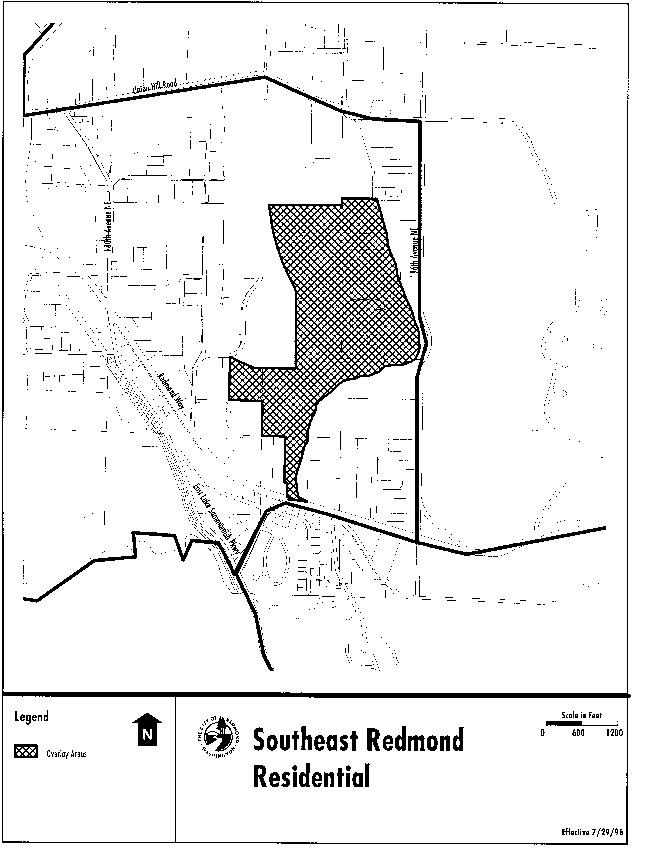
20C.70.50-050 Residential Architectural, Site and Landscape Design Standards.
(1) Purpose.
(a) To establish criteria for design review of new or expanded single-family attached and detached dwelling units and associated landscaping in the Willows/Rose Hill Neighborhood per RCDG 20C.70.50-040.
(b) To establish landscape requirements for new and improved streets, including drainage swales, in the NE Rose Hill Subarea of the Willows/Rose Hill Neighborhood.
(2) Variety and Visual Interest in Building and Site Design.
(a) Intent.
(i) Character Compatibility. Building and site design that provide variety and visual interest help to provide compatibility with the character of the surrounding neighborhood. Neighborhood characteristics include variety in house style and lot sizes, predominance of small- to moderately-sized dwellings, feeling of spaciousness and open green spaces, and abundance of trees and other greenery.
(ii) Variety in Building and Site Design. To prevent the repetitive use of the same combination of building features and site design elements within residential developments and between adjacent dwellings.
(b) Design Criteria.
(i) Variety and Visual Interest. Provide variety and visual interest by using various combinations of building elements, features, and treatments and variation in site design elements in new residential developments. Examples of building elements, features and treatments and site design elements that provide variety and visual interest when used in various combinations are listed below.
(ii) Variety in Building Design. The same combination of building elements, features and treatments shall not be repeated for more than 20 percent of the total dwelling units in a residential development. Dwellings with the same combination of features and treatments shall not be located adjacent to each other. For example, each dwelling in a five-lot subdivision could include a porch provided building elements such as the details of the porch, roof shape or color, building color or materials, or building accents were varied to achieve visual interest. Short subdivisions less than five lots shall not repeat the same combination. (See Figure 1)
Examples of building elements, features, and treatments that provide variety and visual interest (see Figure 1):
(A) Porches and patios.
(B) Varying roof shapes or gables between adjacent structures.
(C) Windows with visible trim and mullions.
(D) Roof brackets.
(E) Dormers.
(F) Fascia boards.
(G) Bay windows.
(H) Entry enhancement such as a well detailed door (multi-panel or glass insert), window adjacent to front door, or roof extension.
(I) Trellis.
(J) Modulation.
(K) Chimney (shown on the exterior of the house).
(L) Variation in roof or building colors and materials, such as brick, stone or other masonry as accents.
(M) Variation in housing type and size.
(N) Other building elements, treatments, features, or site designs approved by the Code Administrator that provide variety and visual interest.
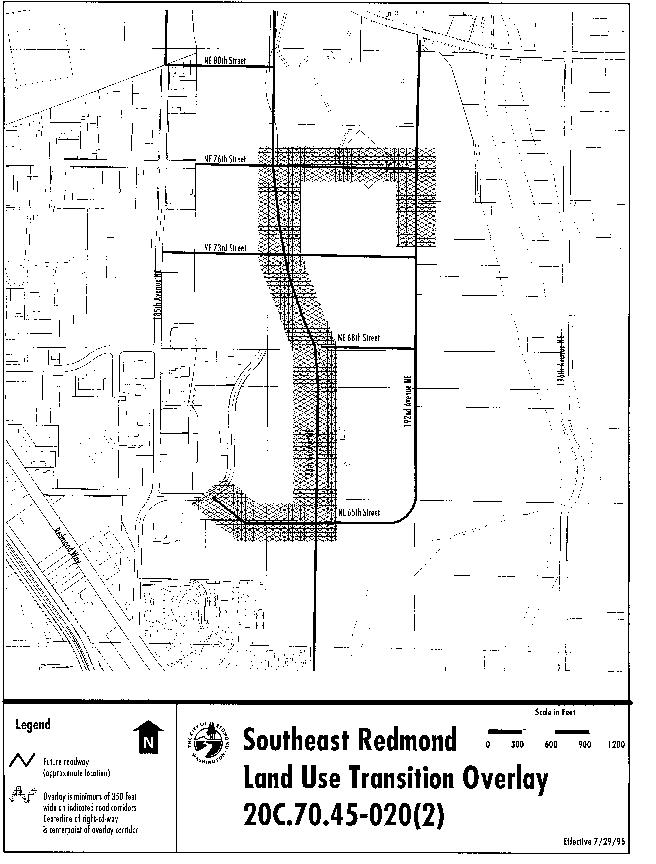
(iii) Variety in Site Design. Variation in site design shall be achieved through the use of various site planning methods and techniques. Also use various site planning methods and techniques to provide variation in dwellings located on a site perimeter when visible from public streets or park areas. See examples below.
Examples of Site Design Elements that Provide Variety and Visual Interest (See Figure 1):
(A) Variation in lot sizes or orientation.
(B) Variation in setbacks.
(C) Variation in dwelling unit size or type among adjacent or nearby structures along a street.
(D) Variation in type of driveway (shared driveway or not shared).
(E) Alleys. (See Figure 2)
(F) Other site design features approved by the Code Administrator that provide variety and visual interest.
(iv) Exemptions. Expansions to single-family homes are exempt from RCDG 20C.70.50-050(2), Variety and Visual Interest in Building and Site Design.
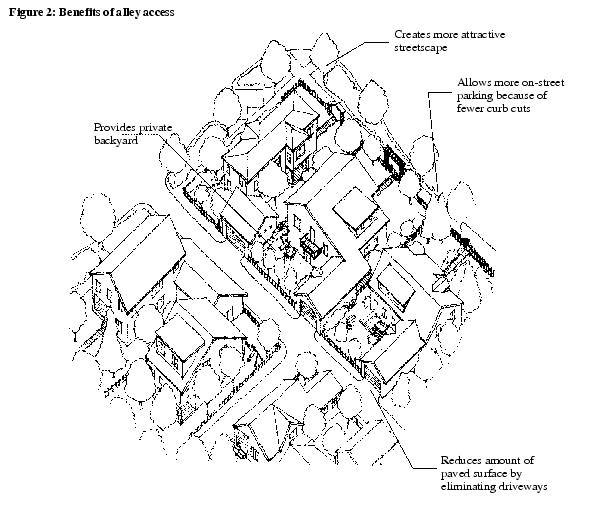
(3) Building Orientation.
(a) Intent. Provide active streetscapes that promote a more walkable and enjoyable neighborhood experience for residents. Dwelling, site, and streetscape design should incorporate features that bring the primary living area of the dwelling toward the street. (See Figure 3)
(b) Design Criteria.
(i) Garage Placement.
(A) Garages shall not be the dominant feature as viewed from the street.
(B) Garages facing the front street shall be set back a minimum of five feet from the street elevation of the dwelling, or otherwise designed and placed in a manner that meets the intent of this section, such as recessing under a second story or a projecting roofline, or other treatment(s). The front street elevation of a side-loaded garage shall have a minimum of one opening (i.e., window or door). Garages that face another direction, i.e., side- and alley-loaded garages are exempt from the five-foot setback requirement.
(ii) Garage Doors. Garage doors facing the front street shall include windows, multiple garage doors (for example, one door per parking stall) or other architectural treatments that reduce the mass of the garage door surfaces and meet the intent of this section.
(iii) Transition Area. Provide a minimum 80-square-foot area in the front yard that is oriented toward the front street and includes a porch (minimum dimension eight feet on all sides), patio, deck, garden with entry, walkway with arbor, or other feature(s) that meets the intent of this section.
(iv) Alleys. There is a four-foot yard setback for garages that are accessible from an alley. For the purpose of providing visual appeal and interest, when an alley is adjacent to a rear yard, yard landscaping shall extend to the edge of the alley or a landscape strip between the alley and the fence shall be provided.
(v) Other Methods. The Code Administrator may approve other methods that meet the intent of this section.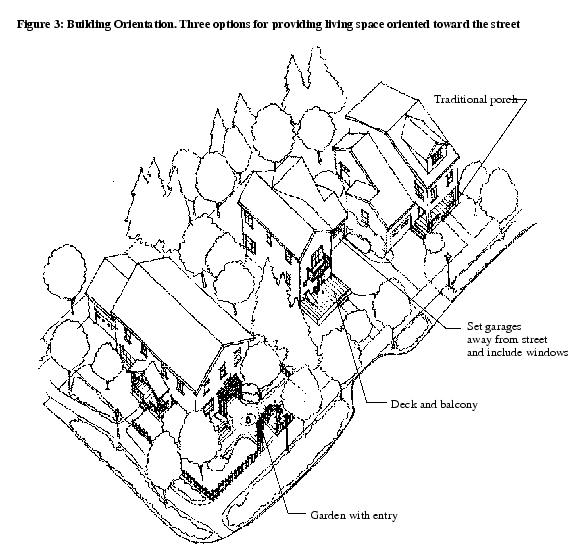
(vi) Exemptions. Expansions to single-family dwelling units are exempt from this section except for the following:
(A) When an expansion is greater than 50 percent of the existing gross floor area of the dwelling unit and does not include a garage, subsection (3)(b)(iii) of this section, Transition Area, applies.
(B) When an expansion is greater than 50 percent of the existing gross floor area of the dwelling unit and includes a garage, subsection (3) of this section, Building Orientation, applies.
(C) When the expansion consists of a garage only, subsection (3)(b)(i) of this section, Garage Placement, and subsection (3)(b)(ii) of this section, Garage Doors, apply.
(4) Building Character, Proportionality and Massing.
(a) Intent.
(i) Lot/Structure Proportionality. Lot coverage requirements help to maintain a consistent and compatible land use pattern. A primary land use pattern in the Willows/Rose Hill Neighborhood is dwellings that appear proportional to their lot size. New or expanded dwellings that do not appear oversized for their lot are proportional to their lot size and are compatible with the neighborhood. (See Figure 4.)
(ii) Building Character and Massing. Reduce the apparent size of large infill buildings and give them more visual interest through the use of design techniques. The application of design techniques shall promote compatibility with the surrounding neighborhood while maintaining variety and visual interest in building design.
(iii) Open Space. Provide visual relief from the massing and scale of built development through site design techniques such as centrally locating open space.
(b) Design Criteria.
(i) Maximum Lot Coverage for Structures. The maximum lot coverage for structures shall be 35 percent in the Residential Innovative, R-5 and R-6 zones in the Willows/Rose Hill Neighborhood to help ensure that dwelling units are of a scale that is proportional to the lots on which they are located.
(ii) Lot Coverage for Cottages. Lot coverage for cottages is provided in RCDG 20C.30.52, Cottage Housing Developments.
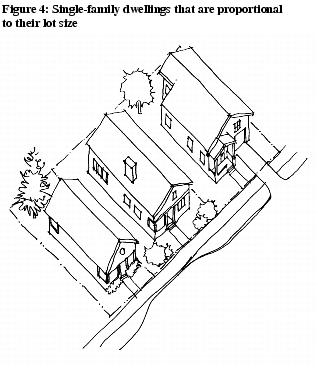
(iii) Modulation and Articulation. Use modulation and articulation in a clear rhythm to reduce the perceived size of large infill buildings. The use of these techniques shall be varied between adjacent buildings. (See Figure 5)
(A) Articulation is the giving of emphasis to architectural elements (like windows, balconies, entries, etc.), that create a complimentary pattern or rhythm, dividing the large buildings into smaller identifiable pieces.
(B) Modulation is a measured and proportioned inflection in a building’s face. Together articulation, modulation and their interval create a sense of scale important to residential buildings.
(iv) Consideration of Site Conditions. Buildings should step down or terrace down a hillside for the purpose of fitting into the topography. (See Figure 6)
(v) Building Separation. Minimum building separation shall be 15 feet except for small structures including cottages, size-limited dwellings, accessory dwelling units and accessory structures. Minimum building separation for cottages is provided in RCDG 20C.30.52, Cottage Housing Developments. Minimum building separation for size-limited dwellings, accessory dwelling units, and locations where these structures or cottages adjoin larger dwelling units shall be 10 feet.
(vi) Building Encroachments.
(A) Chimneys and porches in interior setback areas shall be set back a minimum of five feet from the nearest property line.
(B) Bay windows may encroach into a side interior setback but shall not be closer than 3.5 feet from the nearest property line.
(vii) Open Space.
(A) A minimum of 25 percent of the required open space for residential developments of 30 dwelling units or more should be centrally located as common open space and should be designed to achieve the following:
(1) To provide visual relief from the massing of development.
(2) To serve the recreational needs of residents of the development.
(3) To enable children’s play areas to be visible from residences in the development.
(4) To provide habitat for wildlife.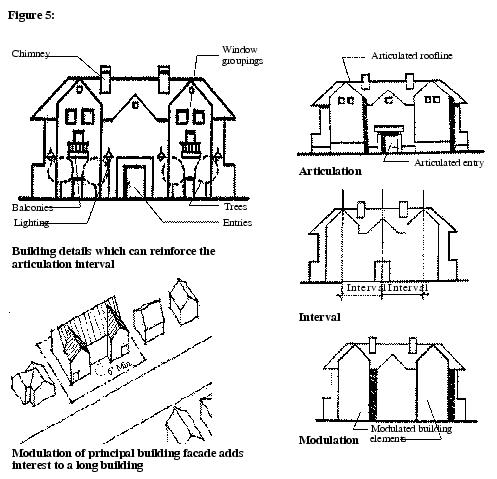
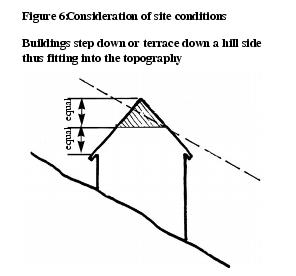
(B) Common open space shall be usable area for passive or active recreation, such as picnic tables, benches, scenic viewing areas, children’s play equipment or sport courts.
(C) When minimum open space requirements are met on a development-wide basis in residential developments of 10 dwelling units or more, this section applies.
(viii) The Code Administrator may approve other methods that achieve the intent of design criteria (4)(b)(i) Maximum Lot Coverage for Structures, (iii) Modulation and Articulation, and (iv) Consideration of Site Conditions.
(5) Landscaping.
(a) Intent.
(i) Vegetation. To include vegetation in residential landscaping areas to soften the bulk and mass of buildings, to add visual interest, and to maintain and enhance the environmental quality of the neighborhood.
(ii) Wildlife Habitat. To benefit wildlife habitat in the neighborhood by providing landscaping that supports wildlife and minimizes opportunities for invasion by non-native intrusive species.
(iii) Conservation. To conserve water consumption by encouraging drought-tolerant vegetation.
(iv) Property Values. To maintain and protect property values.
(v) Storm Water Management. To reduce erosion and storm water runoff, and to improve water quality.
(vi) Maintain Vegetation. To maintain or replace existing vegetation.
(vii) Plant Materials. To promote proper plant selection and continuous maintenance so that plant materials can flourish.
(viii) Pedestrian Safety. To promote pedestrian safety by separating walkways from streets with a landscaped area.
(ix) NE Rose Hill Character. To maintain and enhance the NE Rose Hill Subarea’s character.
(x) Streetscapes. To encourage visually appealing streetscapes that unify the NE Rose Hill Subarea.
(b) General Requirements. General requirements for landscape plan approval performance assurance, planting practices, and planting standards are provided in Chapter 20D.80 RCDG, Landscaping and Natural Screening. Compliance with Chapter 20D.80 RCDG is required.
(c) Design Criteria.
(i) Landscaping and Landscape Plans Required.
(A) Landscaping for the front yard shall be provided for new residential developments, including single unit developments and expansions to single-family dwellings.
(B) A landscape plan shall be prepared or approved by a licensed landscape architect, certified nurseryman, or certified landscaper. Single unit developments and expansions to single-family dwellings are required to provide a landscape plan but are exempt from this requirement to have the plan certified.
(ii) Landscaping and landscape plans shall include:
(A) A minimum of 51 percent of the planted area in the front yard shall be native plantings and include a mix of trees or shrubs and living ground cover. Grass lawns are excluded from this calculation and may occupy the entire landscape area.
(B) Vegetation for common areas.
(C) Street trees for streets internal to or adjoining residential developments in accordance with the Street Tree Plan.
(iii) Landscaping Transition.
(A) For new subdivisions, short subdivisions, and similar residential developments, provide landscaping along the perimeter of the site that incorporates native trees and softens the transition between new and existing dwelling units when the new dwellings are directly adjacent to lots with existing dwellings or the dwellings can be viewed from public streets or park areas. (See Figure 7)
(B) The Code Administrator may approve other methods that achieve the intent of the landscaping transition requirement, such as increased setbacks that soften the transition from existing to new dwelling units.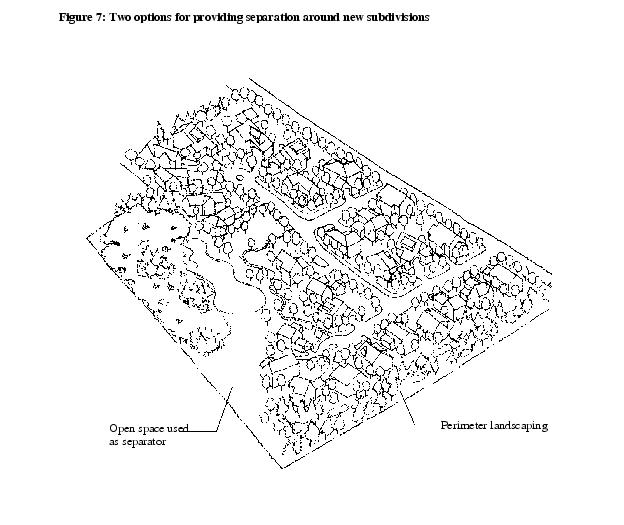
(iv) Exemptions.
(A) Expansions to single-family dwellings are exempt from subsections (5)(c)(i) and (ii) of this section when the expansion is less than 25 percent of the existing gross floor area of the dwelling AND less than 50 percent of the existing landscape is being replaced. Single unit developments and expansions are exempt from subsection (5)(c)(iii) of this section, Landscaping Transition.
(B) Private open space as defined in RCDG 20C.30.52, Cottage Housing Developments is exempt from subsections (5)(c)(i), (ii) and (iii) of this section.
(v) Landscape Drainage Swales. (See Appendix 20D-3)
(A) General Design Criteria.
(1) Landscape Separation. Enhance the street edge by providing a separation between vehicle lanes and walkways that has an informal landscaped look.
(2) Landscape Edge. Provide a natural looking landscaped edge that does not sharply define the private property from the public area and street.
(3) Drainage Swales. At a minimum, design drainage swales to convey storm water and to provide a natural looking and informal landscaped edge that separates walkways from vehicle lanes. Subdivisions should include, and short subdivisions are encouraged to include, drainage swales landscaped to enhance storm water quality and control.
(4) Swale Maintenance. Design drainage swales to minimize maintenance required by the City and adjacent property owners.
(B) Maintenance Responsibilities. The adjacent property owner is responsible for landscape maintenance, including irrigation of the swale as needed. The City will provide maintenance regarding the function of the drainage facility and a description of best management practices for swales for property owners.
(C) Examples of Recommended Drainage Swale Plantings. Plantings are recommended for their hardiness, including their ability to withstand drought and wet conditions. The RCDG Appendix contains examples of recommended drainage swale plantings.
(vi) Street Tree Plan. Street trees shall be planted along streets in the NE Rose Hill Subarea in accordance with the Street Tree Plan as a requirement of development, subdivision, and short subdivision.
(6) Fences.
(a) Intent.
(i) Visibility. To increase visibility of front yard and to use principles of Crime Prevention Through Environmental Design (CPTED) to increase public safety and to help deter crime.
(ii) Active and Walkable Neighborhood. To maintain and enhance the neighborhood as a walkable place.
(iii) NE Rose Hill Subarea. To enhance and reflect the open space character of the NE Rose Hill Subarea.
(b) Design Criteria. Where fences are used in the front yard in the Willows/Rose Hill Neighborhood, the following standards shall apply:
(i) Maximum Height. New fences and walls shall be a maximum of 42 inches high when built in the front setback. (See Figure 8)
(ii) Gated Communities. New “gated communities” in short subdivisions or subdivisions with security fencing are prohibited.
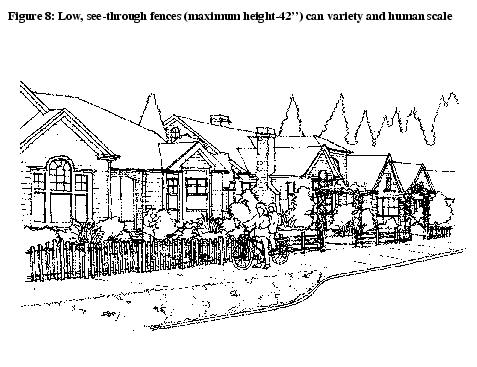
(Ord. 2126; Ord. 1901)
20C.70.50-060 Business Park Zone Design.
(1) Purpose. This section is established to implement the Willows/Rose Hill Neighborhood vision and policies and is designed to retain the following features of the Willows Business Park Corridor:
(a) Important natural features of the hillside corridor.
(b) A pastoral and parkway appearance.
(c) Visual compatibility between buildings and the forested hills and open pastures of the Willows Corridor.
(d) Developments separated from each other with areas of open space.
(e) High-quality site and building design.
(f) Visual buffering of nearby residential uses from development along the Willows Corridor.
(2 Applicability. The Willows Neighborhood Business Park Corridor is located north of the Puget Power transmission line right-of-way, west of Willows Road, south of the City limits, and east of the crest of the hills (see Willows Business Park Corridor Map). These area-specific regulations apply to the properties within this corridor to implement Willows/Rose Hill Neighborhood policies.
(3) References. Developments within this area shall undergo design review and comply with all design and development standards. In addition to the regulations in Chapter 20C.60 RCDG, Business Park, Manufacturing, and Industry Requirements, the following specific regulations for Business Park zoned properties in the Willows Corridor shall apply. Where there is a conflict, the more restrictive regulations shall apply.
(4) Requirements.
(a) All building and parking areas shall be set back an average of 100 feet and not less than 75 feet from the Willows Road right-of-way to preserve a view corridor along Willows Road, to direct development away from aquifer recharge areas, and to protect uses in the Sammamish Valley from interference and other incompatibilities.
(b) Parking shall be screened by buildings or trees from Willows Road.
(c) Development shall be screened by topography, trees or other measures to visually buffer the development from nearby residential uses to the west.
(d) Site design should separate the developments from each other and Willows Road with areas of open space. Forested gullies, wetlands, old pastures and treed areas are the preferred means of separating uses. The open spaces may include trails, open recreation areas, and natural looking storm water ponds. Other uses should not be allowed in open spaces.
(e) Buildings, parking and driveways shall be located and oriented so that large areas of open space are maintained, valuable sensitive areas are protected, natural hazards are avoided and clusters of trees are retained. Open space, sensitive areas and treed areas should be connected to existing or projected open space on adjoining properties to provide for a continuous band of open space across the hillside.
(f) No more than 35 percent of the significant trees on any property may be removed without approval of a planting plan that provides improved wildlife habitat and provides more trees than the healthy, mature trees that were removed. Replacement of significant trees shall be consistent with the City’s tree preservation regulations.
(g) In any development, no more than 60 percent of the site may be covered by impervious surfaces, including buildings, driveways and parking areas.
(h) Pedestrian and bicycle linkages shall be provided to Willows Road. (Ord. 2126; Ord. 1901)
20C.70.50-070 Convenience Retail and Services in Business Park Zone.
(1) Purpose. The purpose of this section is to provide for development of convenience retail and services within the Business Park zone in the Willows/Rose Hill Neighborhood. Convenience retail and services are intended to:
(a) Primarily serve employees in the Willows Corridor with convenient retail and service uses within walking or bicycling access.
(b) Be compatible with existing development and not interfere with the operation of office park, manufacturing park and industrial areas.
(c) Maintain the high visual and environmental quality along the Willows Corridor, including the aquifer recharge area.
(2) Allowed Retail and Service Uses in the Willows Corridor Business Park Zone.
(a) Allowed uses in the Business Park zone include convenience retail or service establishments that sell goods or merchandise or provide services for use on a daily or weekly basis by employees in the Willows Corridor. Uses are not intended to draw customers from outside the neighborhood. Examples of allowed uses include: retail or service businesses that primarily serve the needs of the employees working in the Willows Corridor such as banks, hair cutters, small convenience grocery stores, and video rental stores.
(b) Allowed recreation, entertainment, retail, and service uses in the Business Park zone that are consistent with the intent of this section, such as eating and drinking establishments, athletic clubs and fitness centers, and day care centers, are allowed with the requirements in RCDG 20C.60.20-030.
(c) Convenience retail and service uses not permitted in the Willows Corridor Business Park zone include supermarkets, retail vehicle fuel sales, hotels and motels, or convenience retail or service businesses that primarily serve the general public. Convenience retail and service businesses open to the public 24 hours a day shall not be allowed. Convenience retail and service businesses must be closed a minimum of four hours in any 24-hour period.
(d) Drive-through windows are only permitted in multi-tenant buildings, and shall be designed to prevent interference with pedestrian access, driveway access to surrounding development, and traffic flow on adjacent streets.
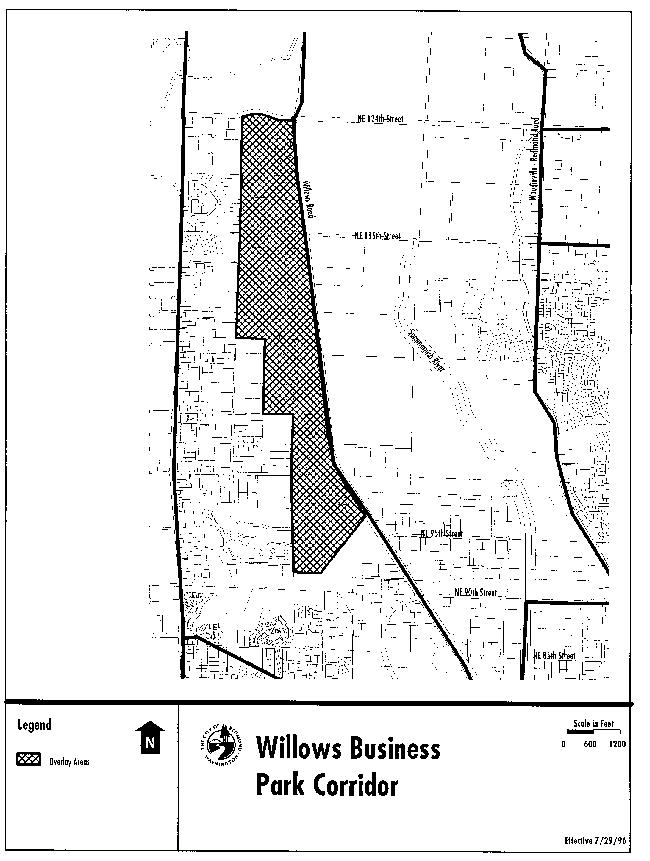
(3) Convenience Retail and Service Business Size.
(a) Minimum Size. Within a single building, convenience retail and service businesses should contain a minimum of 1,000 square feet of gross floor area.
(b) Maximum Size. Within a single building, convenience retail and service businesses shall not exceed 20,000 square feet of gross floor area. Maximum gross floor area may be increased up to 30,000 square feet when an athletic club or fitness center is included.
(4) Convenience Retail and Service Business Locations. The following locational criteria apply to convenience retail and service businesses in the Willows Corridor.
(a) Shall be located as secondary uses in multi-tenant buildings that contain business park uses and shall not be located in separate buildings containing only retail and service uses.
(b) Should be sited to minimize walking distance between the convenience retail and service businesses and to enable the businesses to serve as a gathering and meeting place for employees within the Business Park zone.
(c) Shall be located to encourage employee access by walking or bicycling. Bicycle parking facilities shall be provided.
(d) Shall be located and designed to maintain high visual and environmental quality along the Willows Corridor and to minimize conflicts with existing Business Park uses.
(5) Parking.
(a) Parking shall be provided according to Table 20D.130.10-020(2), Required Off-Street Parking, as indicated for the Business Park (BP) zone.
(b) The Technical Committee may allow flexibility in parking requirements for convenience retail and service businesses based on site-specific factors, such as the availability of nearby shared parking, opportunities for pedestrian access, characteristics of specific uses, and expected peak hour parking demands. The parking ratio shall not exceed 4.0 spaces per 1,000 square feet of gross floor area.
(c) Design of convenience retail and service businesses to provide shared parking and service areas is encouraged.
(6) Other Site Requirements. Approvals shall be conditioned on projects attracting primarily local employees and trips during business hours. See also site requirements provided in RCDG 20C.60.25-020, Chart of Site Requirements; RCDG 20C.70.50-060, Business Park Zone Design; RCDG 20D.40.15, Citywide Design Standards; and RCDG 20C.50.25-110, Pedestrian Standards. (Ord. 2129; Ord. 2126; Ord. 1901)
20C.70.50-080 Critical Wildlife Habitat.
(1) Purpose. RCDG 20D.140.10 contains regulations for protection of critical wildlife habitat that apply Citywide. The purpose of this section is to provide a general guide for the location of critical wildlife habitat within the Willows/Rose Hill Neighborhood.
(2) Map of Critical Wildlife Habitat in the Willows/Rose Hill Neighborhood.
(a) The approximate location and extent of critical wildlife habitat in the Willows/Rose Hill Neighborhood are shown on the critical wildlife habitat map adopted as part of this section.
(b) This map shall be used as a general guide only for the assistance of property owners and other interested parties; boundaries are generalized. The actual type, extent and boundaries of critical wildlife habitat shall be determined in the field by a qualified consultant according to the procedures, definitions and criteria established by Chapter 20D.140 RCDG and Appendix 20D-2.
(c) In the event of any conflict between the critical wildlife habitat location or designation shown on the City’s maps and the criteria or standards of Chapter 20D.140 RCDG, the criteria and standards of Chapter 20D.140 RCDG shall prevail. (Ord. 2126; Ord. 1901)
[Insert critical wildlife habitat map]


